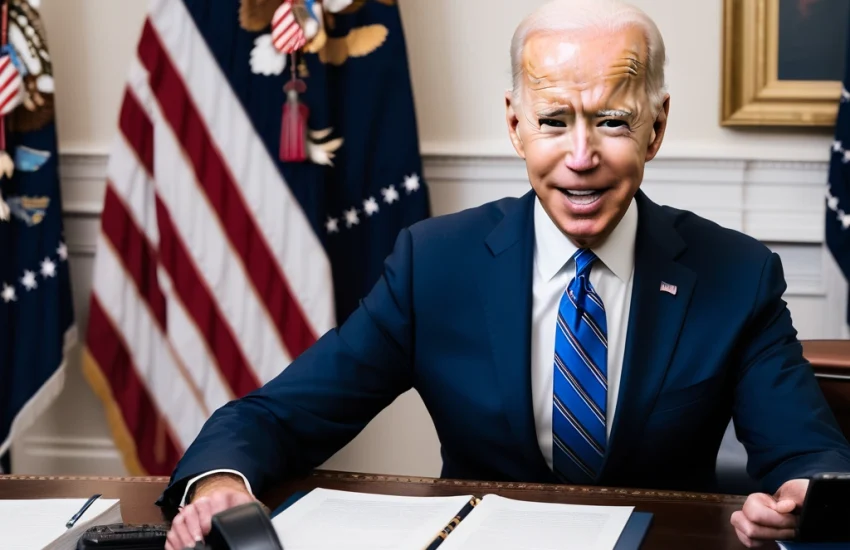Joe Biden’s approach to social media, particularly Twitter, represents a significant shift in presidential communication style from his predecessor. This analysis examines how the current administration utilizes digital platforms to communicate policy, engage with the public, and advance its agenda.
Executive Communication Strategy
President Biden’s social media presence reflects a more traditional approach to presidential communication, characterized by measured statements and policy-focused messaging. His tweets typically align closely with official White House communications, suggesting a coordinated strategy that integrates social media into broader communication efforts rather than using it as a primary channel.
Policy Communication
The Biden administration employs Twitter as one component of a comprehensive communication strategy for policy initiatives. When announcing major policies such as the Infrastructure Investment and Jobs Act, the administration’s tweets form part of a coordinated message across multiple platforms. These communications typically include specific policy details, potential benefits for Americans, and calls to action for public support.
Tone and Style
The president’s social media voice maintains a consistent professional tone that aligns with traditional presidential communication standards. His tweets often incorporate personal elements while maintaining institutional dignity, such as “Folks, the American Rescue Plan is delivering real results for American families.” This approach balances accessibility with presidential gravitas.
Crisis Communication
During national emergencies and international events, Biden’s Twitter communications serve as supplementary channels to formal presidential addresses and press briefings. The administration’s response to events such as the COVID-19 pandemic demonstrates how social media can reinforce official messages while providing real-time updates to the public.
International Diplomacy
In contrast to the previous administration’s approach, Biden’s diplomatic communications via social media maintain traditional diplomatic protocols. His tweets about international relations typically reflect previously announced policies or official statements, rather than serving as primary vehicles for diplomatic engagement. This approach helps maintain diplomatic stability while still utilizing digital platforms for public communication.
Economic Messaging
The administration’s economic communications on Twitter focus on data-driven messaging about jobs, growth, and specific policy impacts. Tweets often include infographics or statistics that illustrate economic progress, such as monthly jobs reports or infrastructure investments. This approach emphasizes concrete results over general statements.
Public Health Communication
During the ongoing response to COVID-19, the administration’s Twitter strategy has emphasized public health messaging and vaccine promotion. These communications typically combine encouragement with specific information about vaccine availability and public health guidelines, demonstrating how social media can support public health initiatives.
Engagement with Opposition
Biden’s approach to political opposition on social media maintains a professional tone while addressing policy differences. Rather than engaging in personal attacks, his tweets typically focus on policy contrasts and specific issues, reflecting a more traditional approach to political discourse.
Digital Accessibility
The administration has made efforts to ensure digital communications are accessible to diverse audiences. Tweets often include closed captions for videos, alternative text for images, and Spanish language versions of key messages, demonstrating commitment to inclusive communication.
Media Relations
The relationship between presidential tweets and traditional media coverage has evolved under Biden’s administration. His social media messages typically complement rather than compete with traditional media coverage, creating a more integrated communication environment.
Legislative Promotion
Social media plays a significant role in promoting legislative initiatives, but in a structured manner that aligns with traditional legislative processes. Tweets about major legislation typically include specific benefits and implementation details rather than general advocacy.
Campaign Integration
As election cycles approach, the administration’s social media strategy demonstrates how official presidential communications can be distinguished from campaign messaging while maintaining consistent policy themes. This separation reflects traditional boundaries between official and political communication.
Crisis Response
During national emergencies or international events, Biden’s Twitter communications serve as supplementary channels to formal presidential addresses and press briefings. This approach maintains the primacy of official channels while using social media for additional reach and engagement.
Staff Coordination
The administration’s social media strategy reflects coordinated messaging across various executive branch accounts. This coordination ensures consistent communication of administration priorities while maintaining appropriate roles for different government entities.
Future Implications
Biden’s approach to social media may influence future presidential communications by demonstrating how digital platforms can be integrated into traditional presidential messaging without becoming the primary communication channel. This model suggests a potential standard for future administrations.
Conclusion
President Biden’s use of Twitter represents a return to more traditional presidential communication norms while adapting to the digital age. His administration’s approach demonstrates how social media can support rather than supplant established communication channels, potentially establishing new standards for presidential digital communication.
The implications of this communication strategy extend beyond immediate political messaging to influence how future administrations may approach digital platforms. As social media continues to evolve, the Biden administration’s model offers insights into balancing traditional presidential communication with digital engagement.
This analysis suggests that effective presidential communication in the digital age requires careful integration of social media into broader communication strategies while maintaining institutional dignity and professional standards. The long-term impact of this approach may influence how future presidents navigate the evolving landscape of digital communication.
